August 2023
volume XXX number 6
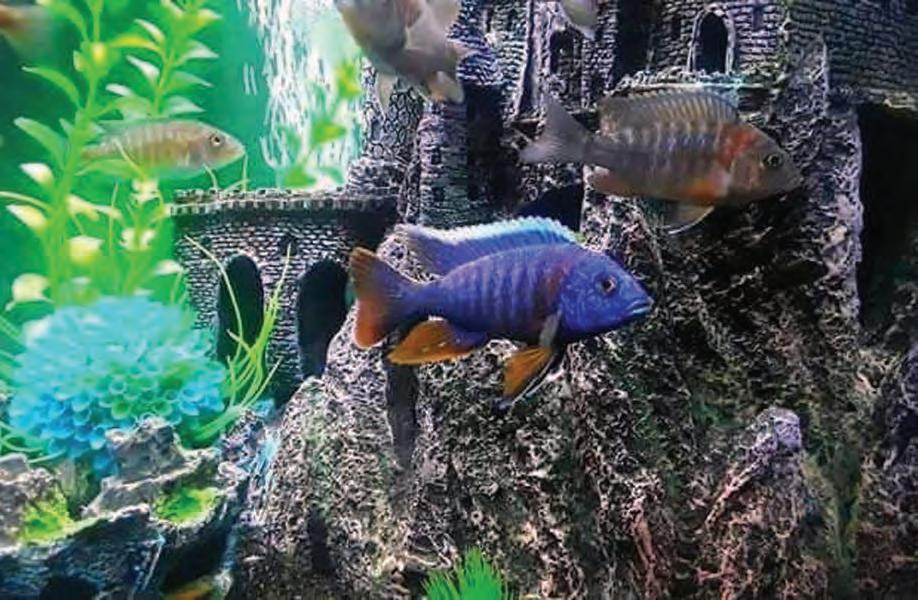
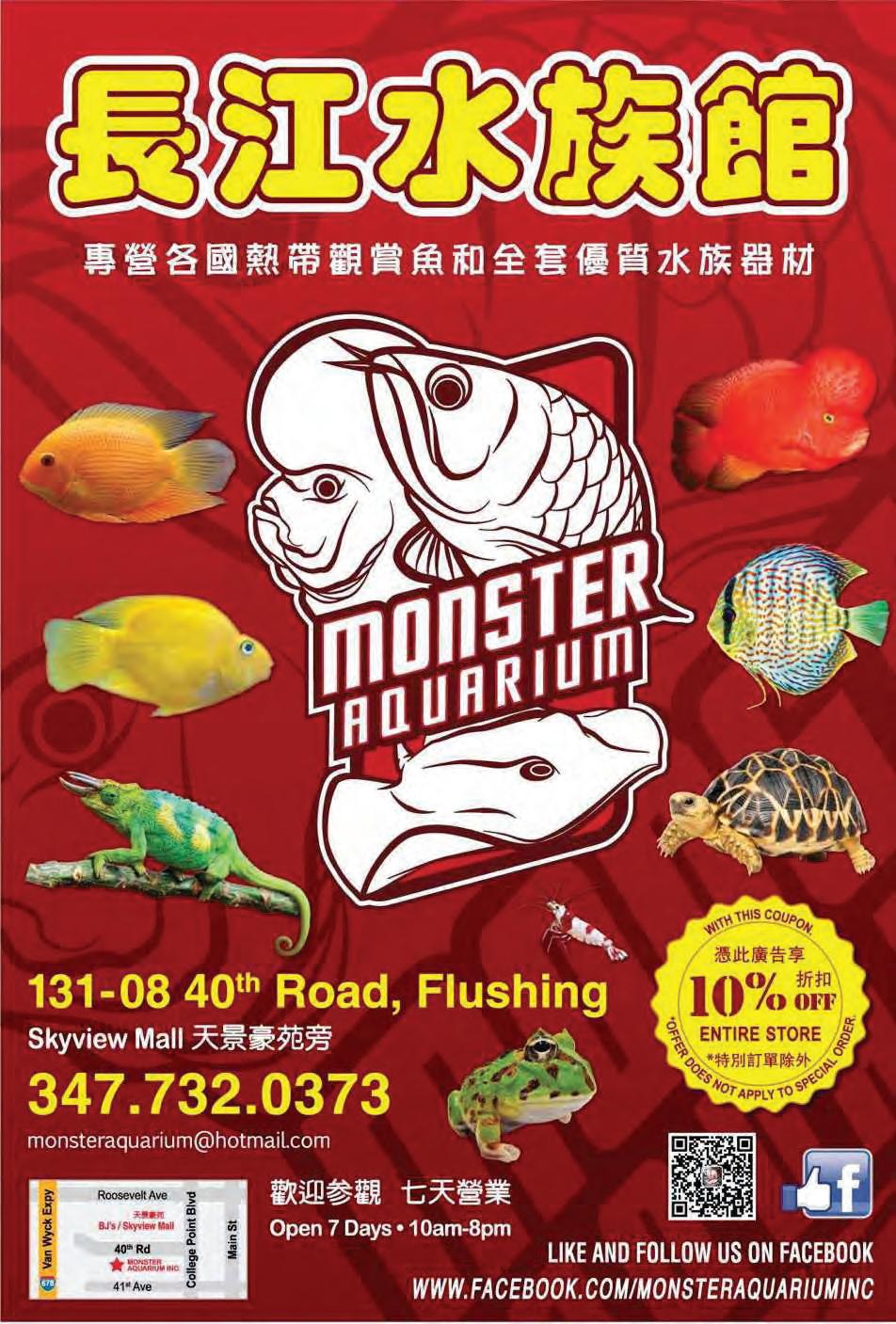
ON THE COVER
Our cover photo last month was of a rather fanciful nature, and this month’s entry partakes of that character as well. Posted on our Fishy Friends Facebook page, the author identifies himself (herself?) as Prast Pasp.
GREATER CITY AQUARIUM SOCIETY
Boa RD Me MB e RS President Horst Gerber
Vice-President Edward Vukich Treasurer Leonard Ramroop Assistant Treasurer Open Secretary Open President Emeritus Joseph Ferdenzi
Me MB e RS at La RG e
Pete D’Orio Al Grusell
Jason Kerner Dan Radebaugh
Marsha Radebaugh
Co MM ittee Chai RS
Bowl Show Joseph F. Gurrado Breeder Award........................Harry Faustmann
Early Arrivals Al Grusell
Membership Marsha Radebaugh
N.E.C. Delegate Joseph Ferdednzi Programs....................................................Open
Social Media Gilberto Soriano
Technical Coordinator Jason Kerner
MODERN AQUARIUM Editor in Chief Dan Radebaugh
Copy Editors: Alexander A. Priest Susan Priest
Sosna Sica Thomas Warns Advertising Manager Robert Kolsky See us on the Web:

In This Issue From The Editor 2 G.C.A.S. 2023 Program Schedule 3 President’s Message 4 Our Generous Sponsors and Advertisers 5 Fishy Friendsʼ Photos 6 July’s Caption Winner 7 Cartoon Caption Contest 8 by Denver Lettman Pictures From Our Last Meeting 9 Photos by Leonard Ramroop Bowl Show Rules 10 My Balanced Aquarium Experiment 11 by Joseph Ferdenzi Today In The Fishroom 13 The Blackout Look by Mo Devlin A New Home 19 by Stephen Sica The Case Of The Hanging Cichlids 21 MA Classics by Frank Fallon Rabbit Snails 23 by Glenn Roberts G.C.A.S. Member Discounts 24 G.C.A.S. Classifieds 25 Modern Aquarium Covers 2015 26 MA Classics The Undergravel Reporter 27 Robotic Fish, Human Heart Fin Fun (Puzzle Page) 28 The Cat’s Meow Series III Vol. XXX, No. 6 August, 2023
Donna
From the Editor
by Dan Radebaugh
So here we are again, back at the Queens Botanical Garden for our monthly meeting of the Greater City Aquarium Society, getting ready to hear this evening’s speaker presentation. Oops! I’m wrong! Tonight there is no speaker! Tonight we devote the entire evening to our annual “Night at the Auction!” Tonight nearly all of us are hoping (secretly or not) to find a fish or a plant that we’ve been wanting but have not yet found! Or, from the other point of view, hoping that the fish we love and have helped to find life will go on to good homes with some of our colleagues here at GCAS.
Of course this isn’t all just about greed. It’s also about learning. Who knows about these fish? What are they like? What do they need to live long and prosper? Who
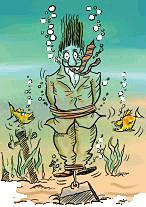
else might want to keep these fish that I find so fascinating? Do I see a fish that I’ve been wanting to find? Or one that I’ve never much thought about, but in person find really interesting?

By the same token, what’s in our magazine this month? Any articles about fish that I’m interested in? Or maybe about fish that I haven’t even been particularly aware of, but after seeing this article I might look a little more closely at a couple that are in the auction? That’s a pretty nice photo in the magazine. What is that fish, and where can I get one? What do they eat, and what kind of water and tankmates do they like?

None of us knows everything, but in a room full of people who know about all sorts of fish, maybe I can learn something that I don’t already know. So & So over there seems to know a lot about some fish she brought in. Maybe I’ll ask her what I might do to make mine look better and act healthier. Hah! There’s actually an article in this magazine about that very fish! Cool! I’ll read the article and then ask the author if there are a couple of things I need more clarification about. Cool! See you next month!
By the way, thanks for all the responses to our cartoon caption contest! It’s really hard choosing a winner each month!
Modern Aquarium - Greater City A.S (NY) 2 August 2023
March 1
April 6
May 3
June 7
GCAS Programs 2023
Tom Keegan
Fish Biology 101, Part 1
David Banks
Lake Tanganyika Cichlids and Appropriate Tankmates
Emiliano Spada
Antique Aquariums and Equipment
Karen Randall
Sunken Gardens
July 5 Dr. Paul Loiselle
The World of Jewel Cichlids
August 2
September 6
October 4
November 1
A Night At the Auction!
Sebastian Alvarado
Color Changes In Fish
William Guo
Freshwater Shrimp
Tom Keegan
Fish Biology 101, Part 2
December 6 Holiday Party!
Articles submitted for consideration in Modern Aquarium (ISSN 2150-0940) must be received no later than the 10th day of the month prior to the month of publication. Please email submissions to gcas@earthlink.net, or fax to (347) 379-4984. Copyright 2023 by the Greater City Aquarium Society Inc., a not-for-profit New York State corporation. All rights reserved. Not-for-profit aquarium societies are hereby granted permission to reproduce articles and illustrations from this publication, unless the article indicates that the copyrights have been retained by the author, and provided reprints indicate source, and that two copies of the publication are sent to the Exchange Editor of this magazine (one copy if sent electronically). For online-only publications, copies may be sent via email to gcas@earthlink.net. Any other reproduction or commercial use of the material in this publication is prohibited without prior express written permission.
The Greater City Aquarium Society meets every month except January and February. Members receive notice of meetings in the mail or by email. For more information, contact: Dan Radebaugh at (718) 458-8437, email to gcas@earthlink.net, or fax to (347) 379-4984. For more information about our club or to see previous issues of Modern Aquarium, you can also go to our Internet Home Page at http://www.greatercity.net, http://www. greatercity.org, or http://www.greatercity.com.

Modern Aquarium - Greater City A.S (NY) August 2023 3
President’s Message
by Horst Gerber
Well, our July 5 meeting was a success, though our attendance was off a bit. Not too surprising, what with all the weather hoopla lately, to say nothing of 4th of July hangovers, lingering smoke from Canada etc., and let’s not forget the fireworks that kept me awake way past my bedtime here on City Island!
Our speaker via Zoom was Dr. Paul Loiselle, and I found his presentation to be very informative, with lots of red cichlids in breeding attire! I always learn a lot from Dr. Paul!
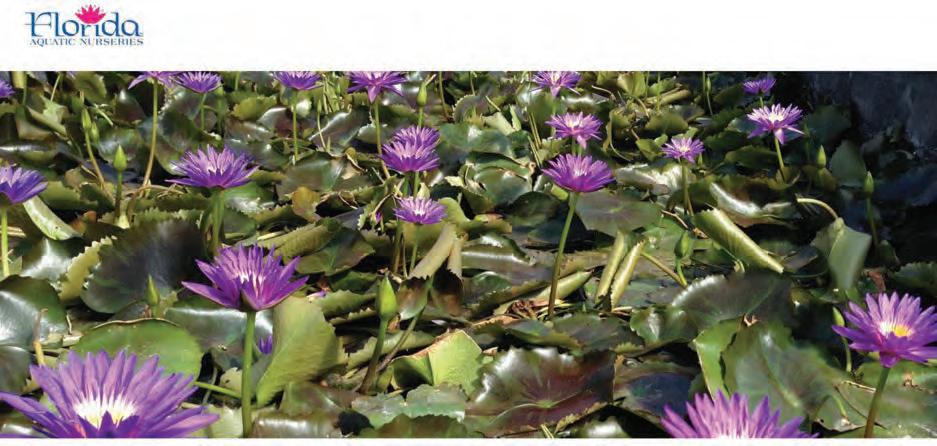

As always, the auction was one of the highlights of the evening! There were lots of wonderful fish and plants, and I got a great deal on some myself! The raffle didn’t go quite so well. Maybe everyone got tired out from the auction. Remember that for the raffle, even if you only win once you get your five dollars back, and most of the auction items are worth more than that!
Thanks to Zoom (and Joe Ferdenzi) we’ve had a lot of great speakers this year, even with the difficulties imposed by the Covid panemic. I also know that we have a lot of knowledgeable people here at Greater City, and we’d certainly love to have more of our members giving talks about YOUR fish and aquaria. We’d love to have more presentations from YOU, our knowledgeable members. That reminds me that along these same lines, we need a new Programs Chairperson for our 2024 season. If you feel you could help us with this, please talk to me (or Joe or Dan) or any of our Board members. We need you, our members, to help us keep our club running in a way that keeps us all part of a great organization! Please step up, and help make our club even greater than it is! And I have to tell you, despite what you might think about becoming part of “the leadership,” that it’s actually fun, and very gratifying to see the difference that your own participation and ideas can make.
Try it! You’ll like it! Horst

4 August 2023 Modern Aquarium - Greater City A.S (NY)
Advanced Marine Aquatics
Al’s Aquatic Services, Inc.

Amazonas Magazine
Aquarium Pharmaceuticals
Aquarium Technology Inc.
Aqueon
Brine Shrimp Direct
Carib Sea
Cobalt Aquatics
Coralife
Ecological Laboratories
Fishworld
Florida Aquatic Nurseries
Franklin Pet Center Inc
Fritz Aquatics
HBH Pet Products
High Quality Exotic Goldfish
Hydor USA
Jehmco
Jungle Bob Enterprises
Jungle Labs
Kent Marine
KHC Aquarium
Kissena Aquarium
Marineland
Microbe Lift
ModernAquarium.com
Monster Aquarium, Inc.
Nature’s Reef & Reptile
NorthFin Premium Fish Food
Ocean Nutrition America
Oceanic
Omega Sea
Pacific Aquarium, Inc.
Penn Plax
Pets Warehouse
Pet Resources
Pisces Pro
Red Sea
Rena
Rolf C. Hagen
San Francisco Bay Brand
Seachem
Sera
Spectrum Brands
Your Fish Stuff.com
Zilla
Zoo Med Laboratories Inc.
Modern Aquarium - Greater City A.S (NY) August 2023 5
Fishy Friends’ Photos
by Greater City Aquarium Society Fishy Friends
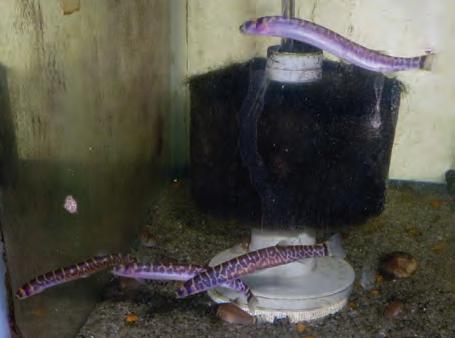

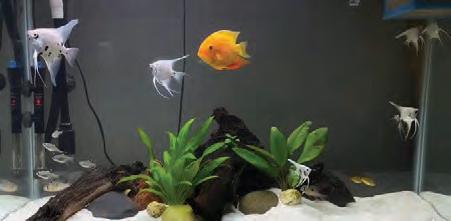
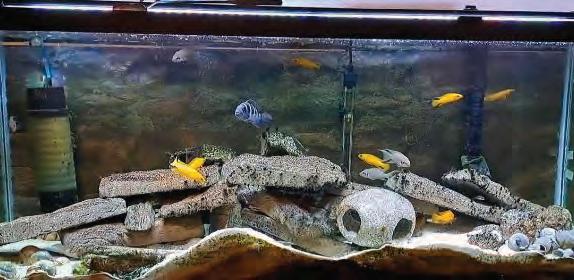
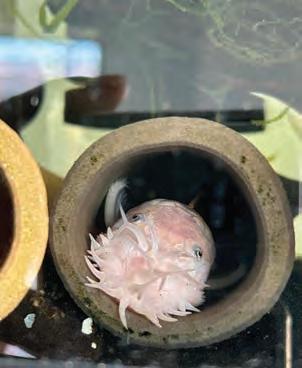

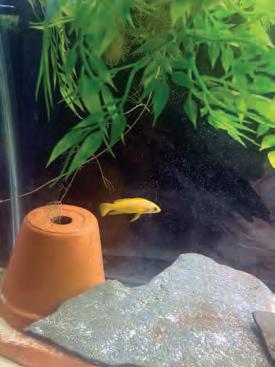
Below are photo submissions to our “Fishy Friends” Facebook group. I’ve left the subjects unnamed, but not the photographer. If you see a shot you like, and want more info, ask the photographer about it! I’m sure he or she will be delighted to tell you!
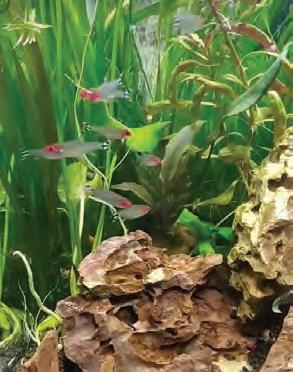
- Greater City A.S (NY) 6 August 2023
Modern Aquarium
Kemoine de Lavallade
Nathan Justa Jan Sereni
Michael Vulis
Christian H. Perez
Lonnie Goldman
Victor Huang
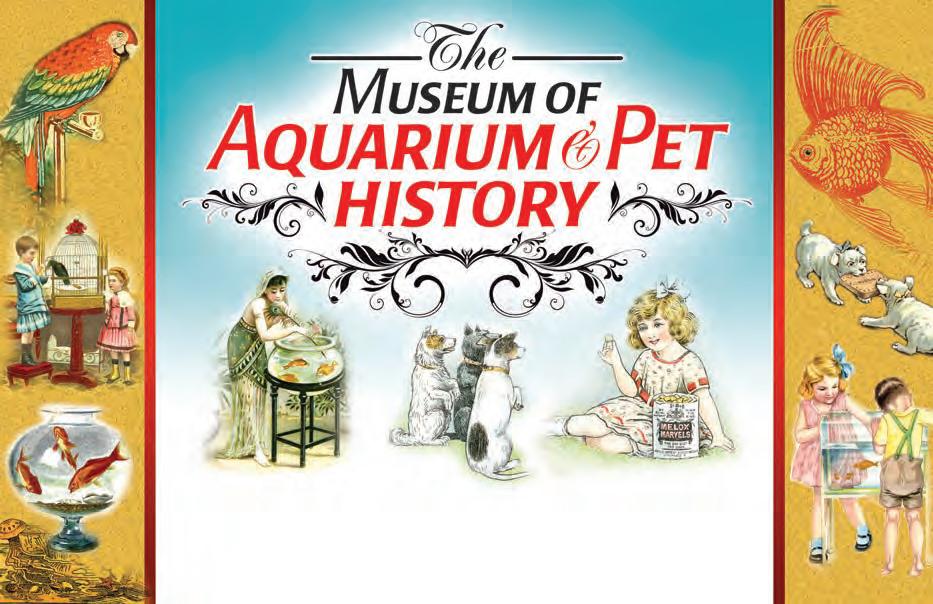
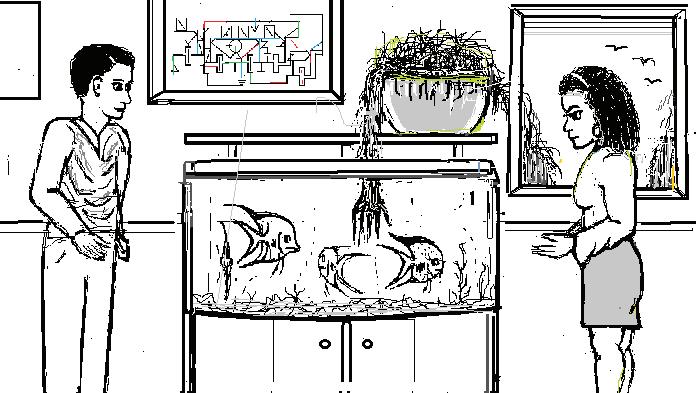
Modern Aquarium - Greater City A.S (NY) August 2023 7 July՚s Caption Winner: Alexander Priest This hydroponics experiment has gotten out of hand! If you like history, and you like pets, then this is the place for you. Dedicated to the history of aquarium & pet keeping, The Museum of Aquarium & Pet History includes a huge depository of over 3,000 items all focused on the pet industry. From antique fish bowls, aquariums and cages, to foods, medications, books and advertising signs, we’ve got it all! To learn more about this amazing collection of historical pet artifacts, please visit our website: moaph.org https://moaph.org/
The Modern Aquarium
Cartoon Caption Contest
by Denver Lettman

Modern Aquarium has featured cartoon contests before, and theyʼre back! You, the members of Greater City get to choose the caption! Just think of a good caption, then mail, email, or phone the Editor with your caption (phone:347-866-1107, fax: 877-299-0522, email: gcas@ earthlink.net. Your caption needs to reach the Editor by the third Wednesday of this month We'll also hand out copies of this page at the meeting, which you may turn in to Marsha or Dan before leaving. Winning captions will earn ten points in our Author Awards program, qualifying you for participation in our special ”Authors Only” raffle at our Holiday Party and Banquet. Put on your thinking caps!

Your Caption: Your Name:

Modern Aquarium - Greater City A.S (NY) 8 August 2023
https://www.amazonasmagazine.com/
Pictures From Our Last Meeting


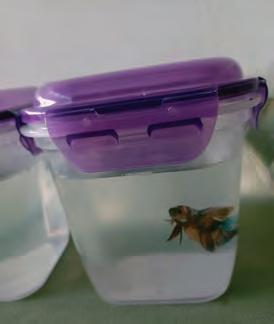
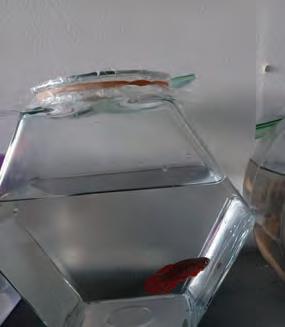



Modern Aquarium - Greater City A.S (NY) August 2023 9
Photos by Leonard Ramroop unless otherwise noted
Pete d'Orio with his new issue of Modern Aquarium, alongside President Horst
1st Place Bill Amely ⸺ Marble Super Delta Betta 2nd Place ⸺ Richie Waizman Half Moon Betta 3rd Place John Buzzetti Killi - F. cingulatus
Bill Amely, Richie Waizmann and Robert Kolksy
Winners
Gilberto Sorano with Andrew Jouen & Son
July Bowl Show
There is a Bowl Show at every GCAS meeting, except our Night at the Auction/ fleamarket meeting and our Holiday Party and Awards Banquet meeting. Bowl shows are open to all members of GCAS. Rules are as follows:
• Only current GCAS members may enter fish in the Bowl Show.
• There is a limit of 2 entries per member per meeting.
• Unlike some other clubs, every month is an “open” Bowl Show at the GCAS (i.e., there is no “theme,” such as that one month cichlids are judged, the next livebearers, the next anabantoids, etc.).
• Any fish that wins any prize (1st, 2nd, or 3rd) may not be entered again in the same meeting year.
• B.Y.O.B. (Bring Your Own Bowl!) Entrants are responsible for providing suitable containers and suitable water for their fish. These containers must be clear on at least three sides.

• Only one fish per container (i.e., no “pairs”).
• No plants, ornaments, or equipment (filters, airstones, etc.) are allowed in the judging tank (an external mirror, or opaque cards between containers is acceptable, as is a cover that does not obstruct side viewing).
• Points are awarded: 5 points for 1st Place, 3 for 2nd Place, and 1 for 3rd Place.
• Ribbons are awarded: blue for 1st Place, red for 2nd Place, and green for 3rd Place.
• The person with the most points at the end of the meeting season receives the Walter Hubel Bowl Show Champion trophy at the Awards Banquet.
• The decision of the judge(s) is final.
• A running UNOFFICIAL total of the points awarded is printed in Modern Aquarium. Only the tally of points maintained by the Bowl Show Coordinator is official.
• In case of ties:
• 1st Tiebreaker – most 1st Places
• 2nd Tiebreaker – most 2nd Places
• 3rd Tiebreaker – most entries
Modern Aquarium - Greater City A.S (NY) 10 August 2023 Modern Aquarium - Greater City A.S (NY) Futures-A 9
My Balanced Aquarium Experiment
by Joseph Ferdenzi President Emeritus, Greater City Aquarium Society
Is the idea of a balanced aquarium a myth?
During the early days of the aquarium hobby it certainly was not regarded as such. When it came to freshwater aquariums, the idea that you could have a balanced aquarium was very much thought of as a reality that could be achieved by following some very basic rules.

At the turning of the 20th century the concept of the balanced aquarium was widely touted in books, and later in magazines dealing with freshwater aquarium keeping. One of New York City’s leading aquarium stores at the time, that of William Stoffregn, went into great detail in one of its brochures to tell its customers all about “The SelfSustaining Aquarium” (reprinted in “New York’s First Aquarium Mega Store (Maybe),”
Modern Aquarium May 2023). In the days before filtration the concept was of great attraction to potential aquarium owners who did not want to be tied to bothersome chores but also wanted a pleasant aquarium.
The concept was relatively simply stated as creating a balance between plant life and animal life. With this balance achieved, the aquarist would not be required to do water changes, and maintenance would be reduced mainly to topping off the tank when evaporation called for it.
Over time the concept came to be viewed with some skepticism. It culminated in a widely distributed and influential article entitled “The Balanced Aquarium Myth” by James W. Atz, a scientist at the New York Aquarium, that was first published in 1949.
Modern Aquarium - Greater City A.S (NY) August 2023 11
Nevertheless, people continued to adhere to the concept as a very viable one. For example, in the 1956 book, Tropical Fish In Your Home, by Herbert R. Axelrod and William Vorderwinkler, the authors write “a properly kept aquarium need never be changed. True, there is a certain amount of evaporation which has to be compensated every now and then by adding fresh water… Changing water is done only in extreme cases: if the water has become fouled or is laden with disease bacteria, but generally not otherwise.”
Even today, I dare say that there is a sizeable group of people who believe in the idea of a balanced aquarium. A greater number probably do not, or at least are very skeptical of the idea.
A few years ago I decided to embark on a small experiment. What actually drove this experiment was my acquisition of an aquarium hood and base made of handcrafted wood. I bought it at an aquarium society auction without having seen it beforehand. It turned out to be beautifully made—its maker was certainly a talented woodworker, but he was a lousy aquarist! The hood had no lighting, no handle with which to lift it, and no openings of any kind for filtration or feeding!
A friend of mine managed to attach two incandescent sockets without damaging the woodwork other than boring a small hole for the lamp cord. I also managed to attach a wooden handle through the wood slats on top without cutting any wood. But still, no opening for filtration and lifting the hood remained cumbersome. That is when I decided to make it a “balanced aquarium” that would hopefully require minimal maintenance.
The tank was ten gallons. I outfitted it with a half-inch layer of quartz gravel and one large piece of red slate about 10 inches long and 3 inches wide lying on top of the gravel. The lighting consisted of two LED daylight bulbs that emit the equivalent of 25 watts incandescent.
After letting the water age for a week or two, I added some floating water sprite. As for the fish, they consisted of a group of about
a dozen wild-form guppies from Trinidad (in the Saint Augustine River, originally collected in 2006). No snails were added, though a few small ones did hitch in on the water sprite.
My tap water has a pH of about 7.0 (neutral) and is relatively soft. Therefore, when I set up this tank in April of 2018, I assumed those were the water parameters.
I fed the fish once a day and I kept the lights on for 12 hours a day. Again, no filtration was used. Room temperature was 75° F. No water changes of any sort were done. Beneath the tall wooden hood I had placed a complete cover of glass and plastic (with one sliding hatch for feeding), so that evaporation was minimal.
Over time, I could not perceive any ill effects on the fish or the plants. The fish did not multiply tremendously, but I attribute that more to the light feedings than to anything else.

Approximately two years later, in March of 2020, I performed a pH test on the aquarium water, which showed a result of approximately 7.5 (alkaline). The fish looked fine. The plants had thinned out some, but were otherwise satisfactory. Algae growth was very minimal, requiring only that I clean the front glass once every few months.
More recently, in February of 2023, I conducted another pH test, which showed approximately 7.5 (alkaline). The fish and plants were both doing well. The main noticeable change in the five years since I established the aquarium is a layer of very fine mulm on the bottom. The water itself however, is crystal clear.
While this has not been a strictly scientific experiment, I think it is fair to conclude that if (1) you don’t overstock your tank with fish, (2) don’t overfeed them, and (3) use aquatic plants, you can maintain small fish in an aquarium without filtration or water changes. Is the balanced aquarium a myth? Maybe it is not!
Modern Aquarium - Greater City A.S (NY) 12 August 2023
today In the FIshroom the blackout look
 Text and Photos by Mo Devlin
Text and Photos by Mo Devlin
One of the questions I am asked frequently is “how do I get that blackout look with my photos? What it’s referencing is an image that basically showcases the fish on a what appears to be a completely black background minus any heaters, filters, or plastic mermaids. With a lot of images, the results can be quite striking, highlighting the fish. There are several ways this can be accomplished. I am going to describe two.
It’s all about the lIght
If you’ve heard me talk about aquatic photography in the past you have no doubt heard me say this before. What takes a photograph is not the camera sensor, or the autofocus system, or the depth of field. Photographs are made with light. Newer and better gear progressively is allowing cameras to require less and less light to be able to capture an image, which is both an incredible technological feat and a useful tool, but it’s not the point. Your ability to control that light is a definite advantage in your end result.
Modern Aquarium - Greater City A.S (NY) August 2023 13
This article is reprinted from the February, 2022 issue of the North Jersey Aquarium Society s Reporter.
nuts, bolts and FIsh that don’t sIt stIll To understand the first “rule of blackout” you need to understand the mechanics of how the image Is initially captured. Camera sensors aside for a minute, it really comes down to three things: the ISO, the aperture, and the shutter speed. For those of us old enough to remember film cameras, ISO is the equivalent of ASA, which was the indication of how sensitive a film was to light. In Digital Photography ISO measures the sensitivity of the image sensor. For all practical purposes the aperture and camera speed do the same thing as old film cameras. The aperture basically is the same as the pupil in your eye. The darker it is, the wider the pupil. Picture walking out of a dark room into the bright open sunlight. Your “squinting” is your pupil adjusting to the additional light being provided to your brain… which is your own personal image sensor. The shutter speed is how quickly your camera’s “pupil” can open and close to capture the light it’s being shown. If you were at a NASCAR race at the rail and the cars zipped by, you’d see them of course, but it would appear as a blur. If you were in the back in the cheap seats, you would see the same car at the same speed, only with less blur. That equates to your focal length of the camera lens…a macro versus a telephoto. But that’s an entirely different discussion when it comes to capturing an image. For simplicity’s sake, let’s just say that the camera has an obvious leg up on it’s ability to stop motion. One of the more common problems with aquatic photography is motion blur. Fish keep moving. That “stop motion” advantage does have a drawback…and as you might imagine…it’s light.
It’s important to understand that all of the elements mentioned above work together to provide a finished product. The best piece of advice I can give, other than adding more light when possible, is taking your camera off it’s automatic setting and start shooting in manual mode. The automatic setting is the training wheels of a bike. It’s there to keep you upright and moving forward. At some point you need to pop those off and start learning how to do wheelies.
Let me give you a scenario that you can relate. You take the camera on automatic, point it at the fish, and take the photo. A couple things might be part of the end result. First Is that the fish is blurry because it was swimming. If you are lucky enough to get it sitting still, it will still be in focus, but the image may appear grainy and not as sharp as the image your “brain sensor” is recording. You might also see that part of the fish is in focus but...and depending on the angle…the other part is slightly out of focus. Your camera was making all those decisions for you. The first thing it considered when you looked through the viewfinder was, you guessed it, the amount of light that was available. Seen through the view- finder was, you guessed it, the amount of light that was available. So the first thing it did was to select a higher ISO, which gave it the ability to capture
Modern Aquarium - Greater City A.S (NY) 14 August 2023
the image in what is no doubt normal…but low...light settings. The second thing, and I say this, but it all happens instantly, is that it picked the aperture that it was going to use to record the light. It opened it’s “pupil” as wide as it could to see the light refracting off the fish. Finally, it picked the speed that the “pupil would blink” to capture the image. Try blinking your own eyes at 1/320th of a second. It doesn’t happen. So, it will select a much slower “blink” to accommodate the other two factors (ISO and Aperture).
takIng control oF the lIght What actually happens when achieving the black-out look is that you are eliminating the ambient light in your photograph. What that means is that instead of seeing the fish alongside the plastic mermaid, you have just enough light to record the image of the fish and NOT the mermaid. How that’s achieved comes down to some additional tools and tricks.
Before we get into that, we are back to the mechanics of what happens in the camera. First thing is to select an ISO that is much lower than your camera in automatic mode. The lower the better. For explanations sake, I’m going to say an ISO of 100. To put that in comparison, many of your automatic setting shots outside are shot at an ISO of @400. Every time you drop your ISO you are in effect doubling the amount of light needed to get the image. So an ISO of 100 is a lot more light needed. Next is the aperture. The higher the number, the smaller the “pupil,” the more light is needed to see. I can’t give any exact numbers, but going back to the previous example, at an ISO of 400 outside, your camera will pick a safe aperture of around 5.6 – 8 under normal conditions. So we want something much higher. Again, every time you go UP you are requiring double the light needed to satisfy the sensor. The shutter speed is the last step. If your additional light source is a flash, most cameras will sync up to 1/250th of a second. Some cameras will sync at higher shutter speed. The best way to explain “syncing” is that when the light goes out from the flash, the shutter is basically closing too fast for the light to get back to the sensor. If the If you are using external lights, like the Lume Cube Don Danko mentioned in the last publication, you can use higher. Try sticking with 1/125th or 1/250th. The benefit of a higher shutter speed, especially when using a flash, is that it will give that extra bump to stop action. So when that fish quickly turns, that extra bump in speed will keep everything crisp.
conFused yet?
Don’t be. Here’s the simple explanation. The camera Is asking for more light to satisfy the ISO & aperture. All of this is done at the expense of the ambient light in the tank. The camera sensor will only record what is accurately reflecting back the necessary light …. meaning the fish. The shutter speed is opening and closing too fast to give the sensors enough time to get the background. The
Modern Aquarium - Greater City A.S (NY) August 2023 15
aperture also prevents any extra light from being included in the photo. By the way, an added value for a higher aperture is an increased depth of field… meaning more of the fish will be in focus. Bonus? The benefit of the lower ISO is that there will be less noise and better color and detail. That’s it. Black out.
None of this is an exact science. The second most popular question I’m asked, other than about my gear, is what my camera settings are. Depending on what you are using that may vary. With what I use, my ISO is generally at 25, shooting at an aperture of f36 or higher and a shutter speed of 1/320th of a second using the Nikon that sync’s higher than most DSLR’s. Keep in mind that I use several flash units to afford me this opportunity. I put it in perspective this way: I use Nikon SB5000 flash units…which can illuminate a subject as far away as twenty or thirty feet. I average using at least three sometimes, as many as five of them on a fish tank that at best is 20” deep….and sometimes a photo tank that holds a gallon of water.
But don’t despair if you read this and think that you don’t have the tools to do the job. There’s LIGHT (like how I worked that in again?) at the end of the tunnel. I mentioned that there are a couple ways to get the black outlook. In the next installment I’ll give you a couple ways to “cheat” the process in post-production.
My passion for the aquarium hobby is only superseded with my love of photography. And I enjoy talking about both. If you have any questions that are specific to this process, or simply want to send questions to the editor about issues you are having with your DSLR, IPhone photos, post processing, what- ever… Ask anything and I will do my best provide an answer based on my experience.
Mo

Modern Aquarium - Greater City A.S (NY) 16 August 2023
You Tube -
Devlin Aquamojo.com www. facebook.com/aquamojo/
http://bit.ly/2Ful8sf


Modern Aquarium - Greater City A.S (NY) August 2023 17 THE NORTH JERSY AQUARIUM SOCIETY REPORTER FEBRUARY 2022 Page 11
PHOTO INFO


Betta Cover — Photo-Photographing smaller fish makes eliminating the background easier because you have more control over the light.
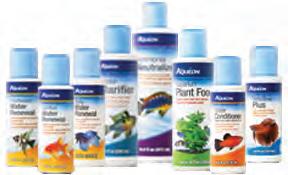

Citrinellum – The blackout look doesn’t have to be complete. Including some of the back-ground can add perspective.
Family Affair – Even though planning the light is key, a certain amount of luck comes into play. This group shot I call Family Affair was a matter of taking the photo at the right time.
Purple Rose Queen Hybrid – The lighting can be adjusted to illuminate more than just the fish creating a more dramatic pose.
Red Dovii – Even when the background is not totally eliminated, the proper lighting on the subject will make them stand out, like this shot of a Red Dovii.
Tiger Barb – Blackout or whiteout is an excellent technique for providing what I dubbed a “species shot”. At this angle, even a larger aperture will allow for complete focus.

Modern Aquarium - Greater City A.S (NY) 18 August 2023
a neW home
Sica
having been members of the Greater City Aquarium Society for about twenty-five years, Donna and I have been fortunate to have met many friendly and helpful people. I consider us to be low key and not particularly outgoing. We simply enjoy the experience of meeting new people. Donna is not a fish person. She keeps me company, helps me carry things and figure out where I’m going when we drive, especially in the dark. Donna usually sits upstairs to read and monitor our dog. It was upstairs that she met Michelle Walgren, another reader of books, novels and all things that have nothing to do with fish. Meanwhile, downstairs I started speaking with the person sitting next to me, who happened to be her husband Herb. The four of us would sit together at GCAS Holiday parties, visit each others’ homes and occasionally socialize.

We met the Walgrens’ two adult daughters and their children. We were honored to be invited to attend their fiftieth wedding anniversary party in 2018.
In July of 2022, Michelle and Herb permanently relocated to Oviedo, Florida to be near their children. Joelle, their older daughter, already resided in Florida. Arielle, their younger daughter, and her family bought a home in the state a few years ago with plans to relocate upon her husband’s retirement. Living in Florida was going to be a Walgren family affair.
Arielle and her husband found a nice house for Michelle and Herb in a neighboring town last year. Both families were fortunate to sell their homes in New Hyde Park. They flew off to Florida and bade farewell to their New York friends on the July 4th weekend of 2022.
Modern Aquarium - Greater City A.S (NY) August 2023 19
Story and Photos by Stephen
As a fishkeeper in New Hyde Park, Herb kept two aquariums in his basement. He had a 29 gallon rectangular tank and a hexagonal. I don’t remember its size, but it was either a 20 or 35 gallon. Herb would give me lots of plants and snails that it seemed to me he was able to grow without much effort.
In May, Donna and I made a two week car drive to Florida to visit relatives and friends. We were also going to enjoy our first scuba diving excursion since the pandemic. We traveled as far south as Key Largo. On the way home we stopped in Oviedo, which is about thirty miles east of Orlando, to visit Michelle and Herb. Herb had abandoned his hex tank but took the 29 gallon to Florida where he set it up with fish.
Herb recounted his negative experience with the Florida water at his new residence, a complaint that he had made to me during a phone conversation a few weeks earlier. He told me that while New York state
uses chlorine to treat its drinking water supply, at his new home in Florida the state uses chloramine, and when he set up his 29 gallon tank and stocked it with fish in 2022, they all died within one hour. He thought that rubber tubing might be the cause, but when the problem continued, he researched the internet and discovered that the water treatment where he now lives uses a combination of chlorine and ammonia to equal chloramine. This was the cause of his fish problem. The solution was to add API Stress Coat water conditioner to remove both chlorine and chloramine, as well as any heavy metals that might be in the local water. He changes his water by removing half and then adding a full dose of API Stress Coat, mixing thoroughly, and adding another half of tapwater.
Herb now has a successful community tank just around the corner of his front door near a window. There are two pet stores in his vicinity. The one with the better variety and prices is farther away, so Herb usually patronizes the closer store.
Herb and his wife are very happy in their new Florida home, especially to be near their immediate family. He Zooms GCAS meetings as his time permits, and he continues to enjoy his decades-old hobby of fishkeeping. Now that’s something we all understand and can agree upon!




Modern Aquarium - Greater City A.S (NY) 20 August 2023
Herb Walgren poses with his 29 gallon community tank.
Michelle, Donna and Cordelia pose with Herb's tank. Behind them is front door to their Oviedo, Florida home.
Donna and I met Herb and Michelle through attendance at GCAS meetings. We always had a good time at the December holiday party.
The Case of the Hanging Cichlids
by Frank Fallon

Except for the special fish that like to put their eggs along the walls of caves, or are mouthbrooders, most of the cichlids we are familiar with and breed lay their eggs in a pit or on a surface near the bottom of the tank. We are all familiar with these habits, and so it is that when we see cichlid eggs on a rock or piece of tile or slate, we know that within a few days there will be wrigglers, if we are lucky. We also know that the parents may then move them to another location in the tank. Usually that place is a pit dug for the purpose. We have therefore all become accustomed to looking at the bottom of the tank for the wrigglers, which soon become free swimming, and then we must provide food if we are to successfully raise the brood, and get breeder award points and bragging rights at the next fish club meeting. Those of us who are breeders know the drill, or that’s what I thought when I picked up a bag full of Australoheros facetus at a fish club meeting about a year ago. I eventually learned something new from these fish.
This was a fish I knew nothing about and had never heard of before, and there was not a lot of information in the usual places I look. I had more than a dozen of the small fish – at first about an inch and half to two inches long. A few turned out to be stunted runts that eventually disappeared. After about six months, two of the fish became interested in each other. They apparently wanted a bedroom of their own, and I provided a fifteen gallon tank, the largest I had available.
I discovered that this species, sometimes referred to as the chanchita (or chanchito), is native to coastal drainages in Uruguay, the Rio Grande do Sul in Brazil, and the lower portion of the Paraná River in Argentina. It’s a dark, perch-like fish, with horizontal black bars. In earlier times the species was known as Cichlasoma facetum (Jenyns, 1842), and has been around in the hobby for a long time, although not often seen in the shops. It’s a fierce looking fish (more about that later) that does not intimidate easily. It knows when it is going to be fed, and will come to the front of the tank or the surface for food. In my pair the male is much larger than the female, but she has a red circular outer ring on her eyes that makes her look very frightening. A tough cookie, if you will. Eggs were eventually
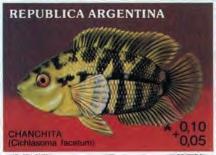
laid on top of a large ceramic rock, but they would fungus, and were eaten. The fifteen gallon tank has no gravel, but I provided a floating log for the female along with a cave rock that she could fit into, but not the male. The log is from Zoo Med—a great sanctuary for battered cichlid wives. Eventually she was about four inches, and he was about six inches long. One morning I noticed that the male had a number of torn up fins. I have come to expect to see the female looking this way, but not the male. The big guy had a split in his tail fin and was missing a chunk of the end of his lovely dorsal fin. His red-eyed partner had apparently turned on him during the night, and torn him up badly. She had no visible damage. I looked for a note of satisfaction in her red eyes but found none. Hmmm….
For almost four months the pattern continued— the mating sequence, the egg laying, and then fungusing and eating, with no viable fry. The surface of the tank is covered with floating plants—duckweed, water lettuce, and hornwort—which are periodically thinned out, but it is a dark tank below the surface. I
This article first appeared in the April, 2008 issue of Modern Aquarium
began to suspect an infertility problem on the part of one of the pair. Was that why she lost it and chewed up his fins, I wondered? But finally I had a large spawn and eggs that lasted three days, and then I spotted a wriggler or two. I suspected that the female had moved the wrigglers into a corner behind some rocks, where I could not see them. A few days later there were still no fry to be seen on the bottom of the tank. There were no parents taking turns hovering over a mass of young wrigglers. I went out of town for four days, and when
Modern Aquarium - Greater City A.S (NY) August 2023 21
I returned she had gone into hiding in the cave and the floating log and I knew it was all over—again.
Every two or three weeks they would lay eggs, but nothing had come of it. I wondered what was going wrong. Like clockwork, about three weeks later there were more eggs on top of the usual rock, and for more than three days there was no fungus. By this time they had used the same rock about eight times. Things were looking good, but they had last time too. In the evening some of the eggs were gone, but no wrigglers were to be seen in the corner of the tank, and there was no hovering parent to be seen. Both fish were in the back of the tank and in a defensive posture, but there was nothing to defend that I could see. There was no mass of wrigglers under either of the parents. In fact both parents were closer to the surface than to the bottom of the tank. I did not want to move the rocks at the back of the tank to see if the young were hidden there.
The next morning, conditions were the same in the tank—defensive parents, but no young. I decided to do a water change, and put my siphon tube into the tank to clean out some of the junk on the bottom. With one quick motion I had the siphon tube into the tank and sucking out bottom debris. But then just as quickly, the male was attacking the tube! Then I saw why. I had knocked a few wrigglers out of the plants as the tube descended to the bottom. I had in fact already sucked about a dozen of his new family into the bucket. I pulled the tube out of the tank and took a closer look. There were three or four wrigglers at the bottom of the tank, and he was already mouthing them for protection. Then I discovered where the babies were. They were above the parents, hanging from the roots of the floating plants! There were hundreds, perhaps as many as five hundred little cichlids, holding onto the plant roots at the top of the tank. The fry were motionless. The parents were hovering below their still fry. The fry were just hanging there, with their worried parents below them. These were hanging cichlids! They had probably been there on previous spawns and I had never seen them, and more importantly, I had never provided any Artemia salinas nauplii (baby brine shrimp) for them, so they had starved to death.
And let me tell you—these are two very aggressive parents! While I have had other fish attack a brine shrimp net at feeding time, I have never had them come out of the water before the net reaches the surface! One of the first times I went to feed the fry, the male grabbed the net and did not let go until I had him about four inches above the water! For almost a week the young stayed at or near the surface looking for food. It was almost two weeks before they began to move to the bottom of the tank, and even then large contingents of their siblings were still at the surface. These are cichlids that like to hang around the surface. The moral of this tale is: Sometimes you have to look up to find cichlid young!
The photo is none too clear, but with a little imagination you might see some brine shrimp toward the lower part of the tank, and some very small fry in the fuzzy-looking area at the top.



Modern Aquarium - Greater City A.S (NY) 22 August 2023
Rabbit Snails
by Dr. Glenn Roberts
Rabbit snails are an interesting freshwater snail that comes from the mountain lakes of Sulawesi, Indonesia. It is in the genus Tylomelania, family Pachychilidae. There are about 46 described species. Some of the common ones seen in the industry include Black Rabbit Snails, Gold Rabbit Snails, Red Rabbit Snails, Orange Rabbit Snails, Dark Chocolate Rabbit Snails and Yellow & White Posso.
They look a lot like Malaysian trumpet snails, but differ in a couple of important ways, the most important being that they do not breed in copious numbers like the MTS. Also, they can grow to 12cm in length! Rabbit snails, also called elephant snails, are a very peaceful, slow moving species that are great at keeping the tank clean. But remember that, as with most snails, they cannot survive on scraps alone. They should be provided with a balanced diet just as all other tank inhabitants. The rabbit-like face gives them the name rabbit snail, while the wrinkly skin gives them the name elephant snail. These snails do have an operculum that covers the opening of their shell when they are retracted, but it only covers part of the opening.
Keeping this species is relatively easy. A stable and established aquarium, preferably with substrate on the fine side, is important. Ammonia and nitrate should be near or at 0 ppm. As with most invertebrates, copper can be toxic, so be careful what medications you use in the tank.
Generally water parameters should be as follows: temperature of 76o ‒ 84o, pH of 7.2 –7.5 to avoid shell erosion, and lighting should
be Normal community lighting to semi-dim conditions. Extra calcium is beneficial for good shell development. A cuttle bone can be added to the tank to provide this, as well as food high in calcium.

As I mentioned earlier, rabbit snails can get quite large, up to 12cm. But, as with other snails, size depends on age. The older the rabbit snail is, the longer it will be, all things equal. In the stores you will find them for sale at around 2.5 ‒ 5cm. They can live up to 3 years.

Rabbit Snails are great scavengers, with a big appetite. But don’t worry, a well fed rabbit snail will not bother your plants. They also like the decaying plant material that gathers in the aquarium. A good diet should include foods such as algae wafers, fish flakes, leafy greens and zucchini.
Remember I said that they look like MTS but don’t breed to the same extent. In fact, rabbit snails only produce one offspring at a time; a little unusual for fresh water snails. The eggs sacks are cream colored, about 0.5cm long, and contain a fully formed snail. When the young snail pops out, it will begin eating immediately. Since these snails lay egg sacks containing a fully formed young, they are called viviparous. This means that the embryo develops inside the parent, giving rise to live birth.
So if you want a fairly easy, low maintenance snail that will be a focal point of your aquarium, try one of the many rabbit snails available. You won’t regret it.
This article is reprinted from the April, 2020 issue of Fins & Tales , published by the Kitchener-Waterloo Aquarium Society.
Modern Aquarium - Greater City A.S (NY) August 2023 23








Modern Aquarium - Greater City A.S (NY) 24 August 2023 10% Discount on everything except ʽon saleʼ items. 20% Discount on fish. 15% on all else. 10% Discount on everything. 10% Discount on everything. 10% Discount on everything. 10% Discount on fish. 10% Discount on everything.
10% Discount on everything.
GCAS Member Discounts at Local Fish Shops
10% Discount on everything.
10% Discount on everything.
10% Discount on everything.
15% Discount on everything in store, or online at: http://www.junglebobaquatics.com Use coupon code gcas15.







Modern Aquarium - Greater City A.S (NY) August 2023 25
Modern Aquarium Covers 2015


March 2015 Aphyosemion australe by Rosario La Corte
April 2015 Home Aquarium by Andrew Jouan






May 2015 Corydoras robineae by Ruben Lugo
June 2015 Betta renata by Alexander A. Priest
July 2015 Xiphophorus variatus by Susan Priest

August 2015 Hypancistrus Sp. Rio Cinaruco by Ruben Lugo
September 2015 Labidochromis caeruleus by Joseph F. Gurrado


October 2015 Trichogaster trichopterus by Alexander A. Priest
November 2015 Leporacanthicus galaxias by Joseph F. Gurrado
December 2015 Cichla occellaris by Rosario LaCorte
Modern Aquarium - Greater City A.S (NY) 26 August 2023
In spite of popular demand to the contrary, this humor and information column continues. As usual, it does NOT necessarily represent the opinions of the Editor, or of the Greater City Aquarium Society

A series by the Undergravel Reporter
Scientists have built a school of robotic fish powered by human heart cells. The fish, which swim on their own, show how lab-grown heart tissue can be designed to maintain a rhythmic beat indefinitely, a team reports in the journal Science .
"It's a training exercise," says Kit Parker, a professor of bioengineering and applied physics at Harvard.
"Ultimately, I want to build a heart for a sick kid." The tiny biohybrids, based on zebrafish, are built from paper, plastic, gelatin and two strips of living heart muscle cells. One strip runs along the left side of the robot's body, the other along the right. When the muscle cells on one side contract, the tail moves in that direction, propelling the fish through the water. The movement also causes the strip of muscle cells on the opposite side to stretch. This stretching, in turn, produces a signal that causes the cells to contract, which perpetuates the swimming motion. "Once that cycle starts, these things just start motoring," Parker says.

Reference : https://tinyurl.com/43n8x8k9
The robotic fish were assembled by a team of scientists including Keel Yong Lee of Harvard and Sung-Jin Park of Emory University and Georgia Tech. The team tested some early samples by artificially activating the muscle cells, then they put the leftover fish in an incubator and forgot them for a couple of weeks. When they opened the incubator, all the fish were swimming by themselves. The fish kept swimming for more than three months, sustained by nutrients added to the fluid around them.

Showing that it's possible to produce human heart tissue that beats on its own is important because the body can't replace heart cells lost to disease or inflammation. The team chose to test its lab-grown heart cells in robotic fish because of the similarities between swimming and the pumping action of a heart. In some ways, a fish is a pump, he says. But instead of pumping blood through the body, it pumps itself through the water.
"The really interesting thing about these fish, which we weren't expecting, is how long they would swim and how fast they would swim in the dish," Parker says. Heart cells stay healthy by constantly rebuilding themselves, a process that takes about 20 days.
Because the fish swam for more than 100 days, each cell has rebuilt itself about five times. The muscle cells also became stronger with exercise the way cells in a human heart do. This suggests the cells could eventual ly be used to repair a failing heart.
Robots powered by living cells raise questions about whether scientists are blurring the lines between machines and living creatures. While those lines are still pretty clear with today's robots, as biohybrids become more sophisticated, they may merit the same ethical consideration given to animals.
Modern Aquarium - Greater City A.S (NY) August 2023 27
Modern Aquarium - Greater City A.S. (NY) August 2023 17
Fin Fun
Catfish are not just found in Africa. There are Asian, South American, North American, and even Australian catfish. Using the chart below, see if you can pick out the African catfish from those endemic to other continents.
Scientific Name Common NameAfricanOther
Eutropiellus buffei Swallowtail Glass Catfish
Synodontis congicus Congo Synodontis
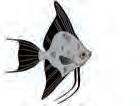
Corydoras crypticus Cryptic Cory
Hexanematichthys graeffei Benny’s Shark Catfish
Auchenoglanis occidentalis Giraffe-Nosed Catfish
Tatia galaxias Milky Way Woodcat
Glyptoperichthys punctatus Spotted Sailfin Pleco
Schilbe marmoratus Shoulder Spot Catfish

Synodontis eupterus Featherfin Catfish
Peckolita vittata Striped Peckolita
Source: Baensch Photo Index 1-5 , Baensch Hans A
Solution to our last puzzle:

Modern Aquarium - Greater City A.S (NY) 28 August 2023
24 August 2023 Modern Aquarium - Greater City A.S. (NY)

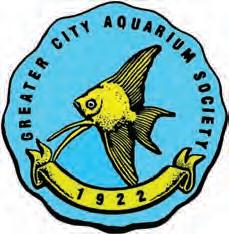


































 Text and Photos by Mo Devlin
Text and Photos by Mo Devlin



















































